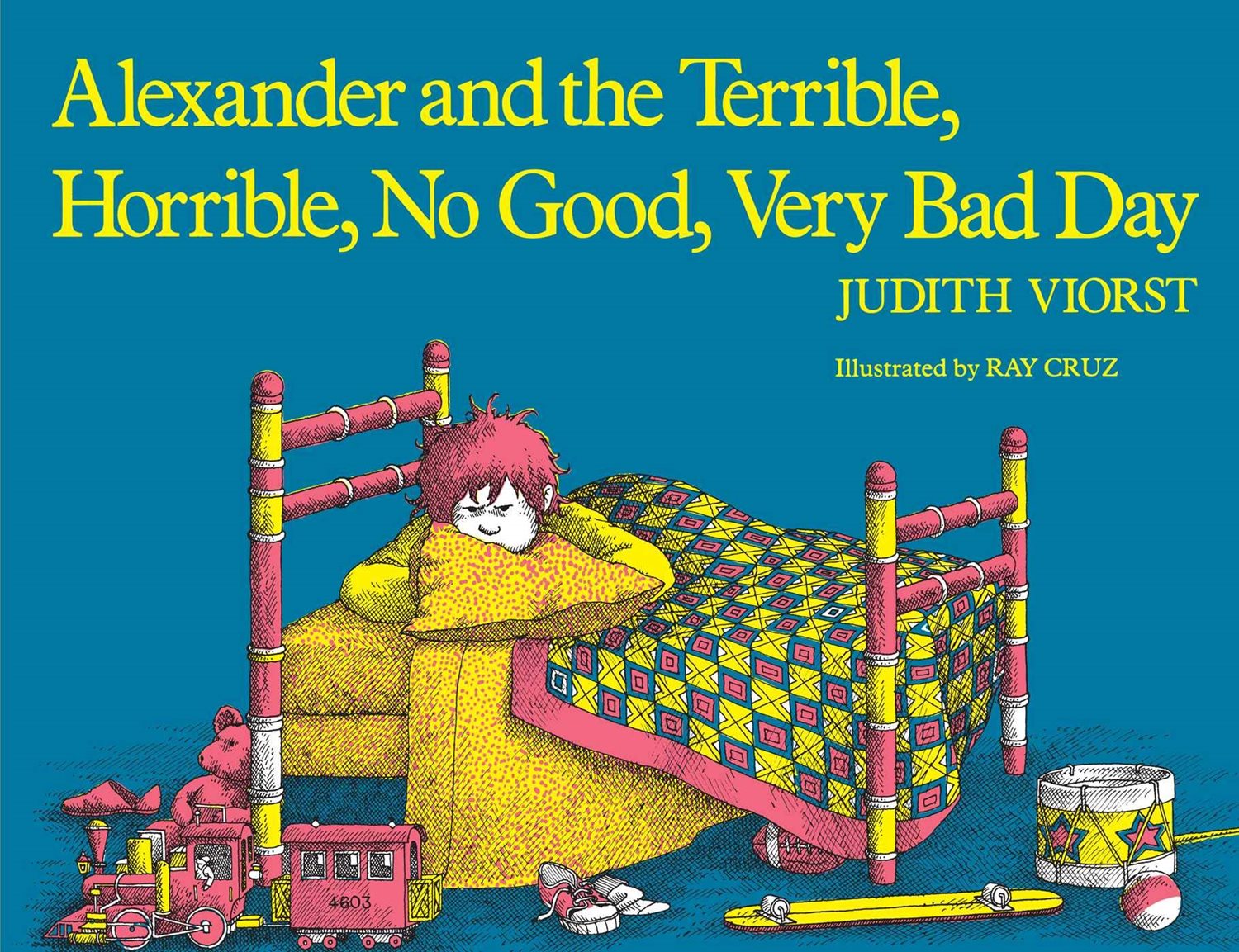This month's Book Nook topic is...
Creating Conversation with Alexander and the Terrible, Horrible, No Good, Very Bad Day

While it can be tempting to read a book from start to finish without stopping, children will learn much more when you pause to have a conversation about the story. In fact, conversation is the very best context for children to learn the early literacy skills that will prepare them for school. In this Book Nook, we’ll look at how you can turn book reading into a conversation with your child, and the things your child might learn when you do this.
Let’s get started!
The Book:
Alexander and the Terrible, Horrible, No Good, Very Bad Day by Judith Viorstt
Why I picked it
Alexander and the Terrible, Horrible, No Good, Very Bad Day tells the story of boy who endures a whole day of mishaps and misfortunes. So much so, that he’s ready to move away to Australia! This book is great for building conversation because it’s very relatable – we’ve all had days where everything seems to be going wrong! By making connections between Alexander’s experiences in the story, and your child’s personal experiences, you can build his vocabulary and literacy skills.
Get the conversation started
Let the child lead the conversation by using the OWL strategy. OWL is an acronym that stands for “Observe”, “Wait”, and “Listen”. You can do this by pausing while you read to give your child a chance to make a comment. Using OWL will allow you to find out what sparks an interest in your child. Just like adults, kids will be much more likely to talk about something when it’s related to their interests and experiences.
The next step is to Follow Your Child’s Lead. This means responding with interest to what your child said. Try this by making a related comment or asking a question. Then Wait again for your child to reply, and there you have it – the conversation has begun!
The first time you read the book
Often the first time you look at a new book with a child he might not say too much because he’s really “soaking up” the story. You can still offer opportunities for conversation by pausing as you read. For example, after turning to a new page, Observe, Wait and Listen (OWL), to see which pictures or parts of the story capture your child’s interests. You can then respond by making a comment that relates to his life. For example, “The store was sold out of the shoes Alexander wanted. He’s upset like you were when the ice cream store had no more chocolate ice cream!” Then, Wait again to see how the child responds to your comment, and to see if you can keep the conversation going.
The second time you read the book
Now that your child is familiar with the story, he will likely have more to say. Keep the conversation moving by making comments or asking open-ended questions about what interests him. For example, “If you were Alexander, and nothing was going right, what would you do?” Then, Wait to hear what the child has to say. Hopefully you’ll each be able to take a few turns in the conversation.
The third time you read the book
Now you can really go beyond the story in the book. At this point, you might ask your child if he wants to tell you the story, or if he can predict what will happen on the next page, or even after the book is finished. Once a child is really familiar with the book you’re reading, you can also try acting out the story.
Happy reading!
More Resources
The strategies in this Book Nook post are drawn from Hanen’s practical, research-based guidebooks for building emergent literacy. Explore the links below to learn more about how these guidebooks can support you.
For Parents I'm Ready! guidebook
I'm Ready! guidebook
For Educators ABC and Beyond guidebook
ABC and Beyond guidebook
